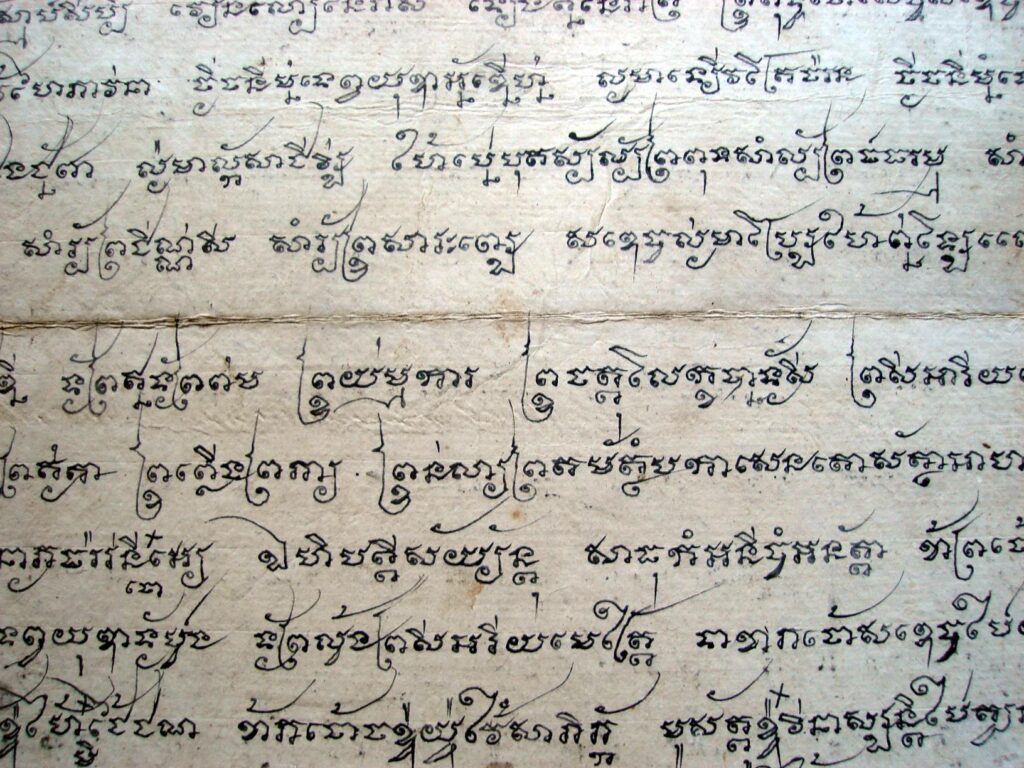The Khom Thai script, the most widely used of the ancient scripts of Thailand, arrived in Thailand as an export of the Khmer Empire, in part thanks to a curious relationship between Hinduism and Buddhism.
As Buddhism spread through the region between the 10th and 15th centuries, it became clear that Buddhist religious texts didn’t give guidance for what might be called religio-political situations, such as the consecration of kings and other social rituals and political ceremonies. Hindu Brahmins took on such roles, and in Thailand they seem to have learned from Khmer teachers from Angkor. The script they used was the ancient Khmer script, which was adapted for writing Thai by adding various letters and forms, and the result became known as Khom Thai, given that Khom means “Khmer.”
For at least 400 years, the Thai and Khom Thai scripts coexisted, side by side, a condition often called digraphia: the Thai script was used, by those who could read and write, for everyday, secular and administrative purposes, while Khom Thai was used, like Tai Tham in the northern part of the country, for sacred texts.
In the nineteenth century, Thailand’s Buddhist monks began to use the Thai script when writing Pali, instead of Khom Thai, and by the end of the century novices studying Buddhism no longer had to learn the Khom Thai script for the Buddhist studies exam. In 1918, the Pali division of the Buddhist Association decided to again include an assignment about the Khom Thai script, out of concern that knowledge of the ancient script would disappear, but in 1945 the Ministry of Education, in the name of nationalism and modernization, decided to remove the requirement permanently.
The ancient relationship between Bangkok and Angkor lost its appeal in the face of growing nationalism. Political power was increasingly centralized in Bangkok, and the Thai educational system tended to disregard traditional knowledge from outside of the capital, including the use of the Tham script, the Tai Noi script, (which has survived, with a few modifications, as the Lao script) and the Khom Thai script.
“Nowadays,” concludes Wikipedia, in a tone of elegiac detachment, “the Khom Thai script is part of a required course for students of oriental palaeography in certain Thai universities…. However, accessibility to information about the script is limited for ordinary Thais interested in the subject, and it receives little attention from the public in general.”
13.7563° N, 100.5018° E
